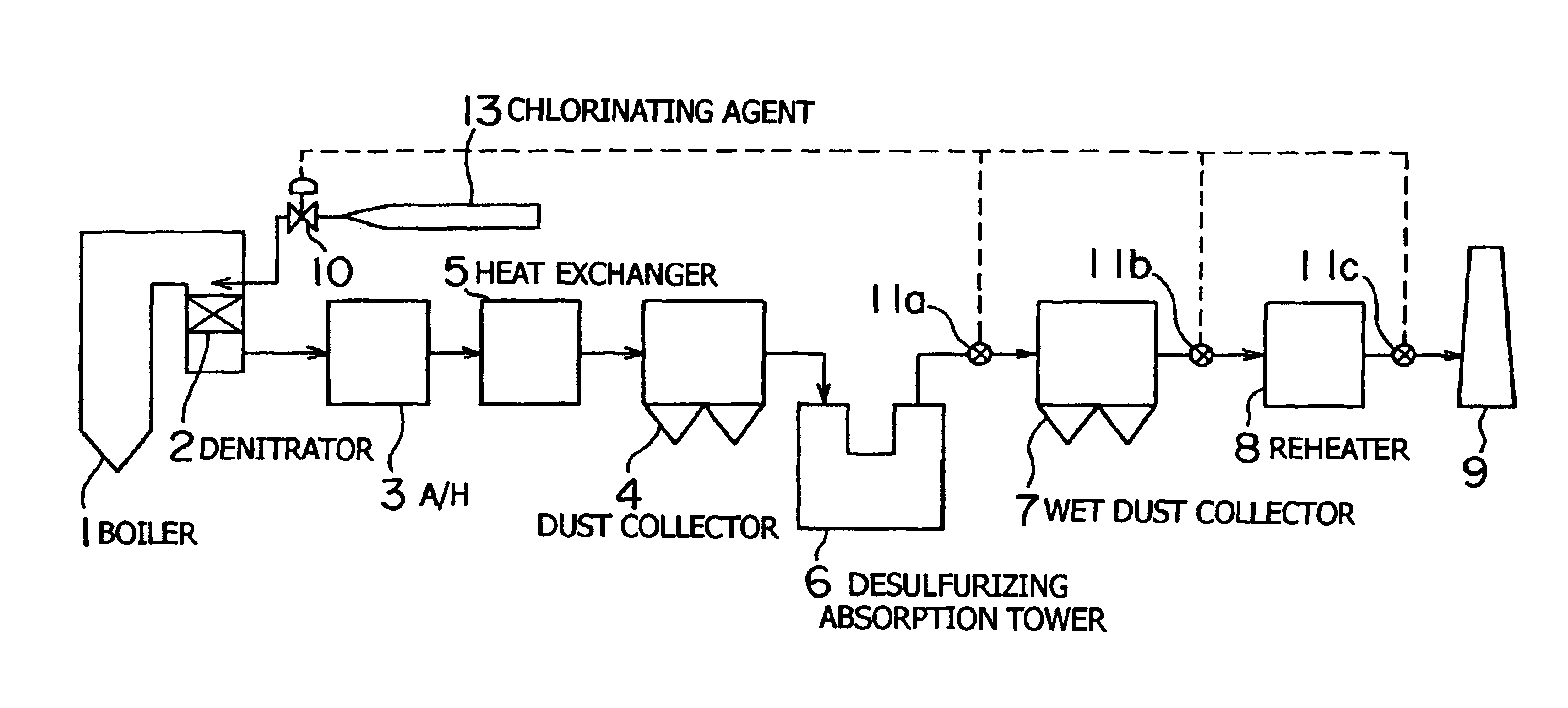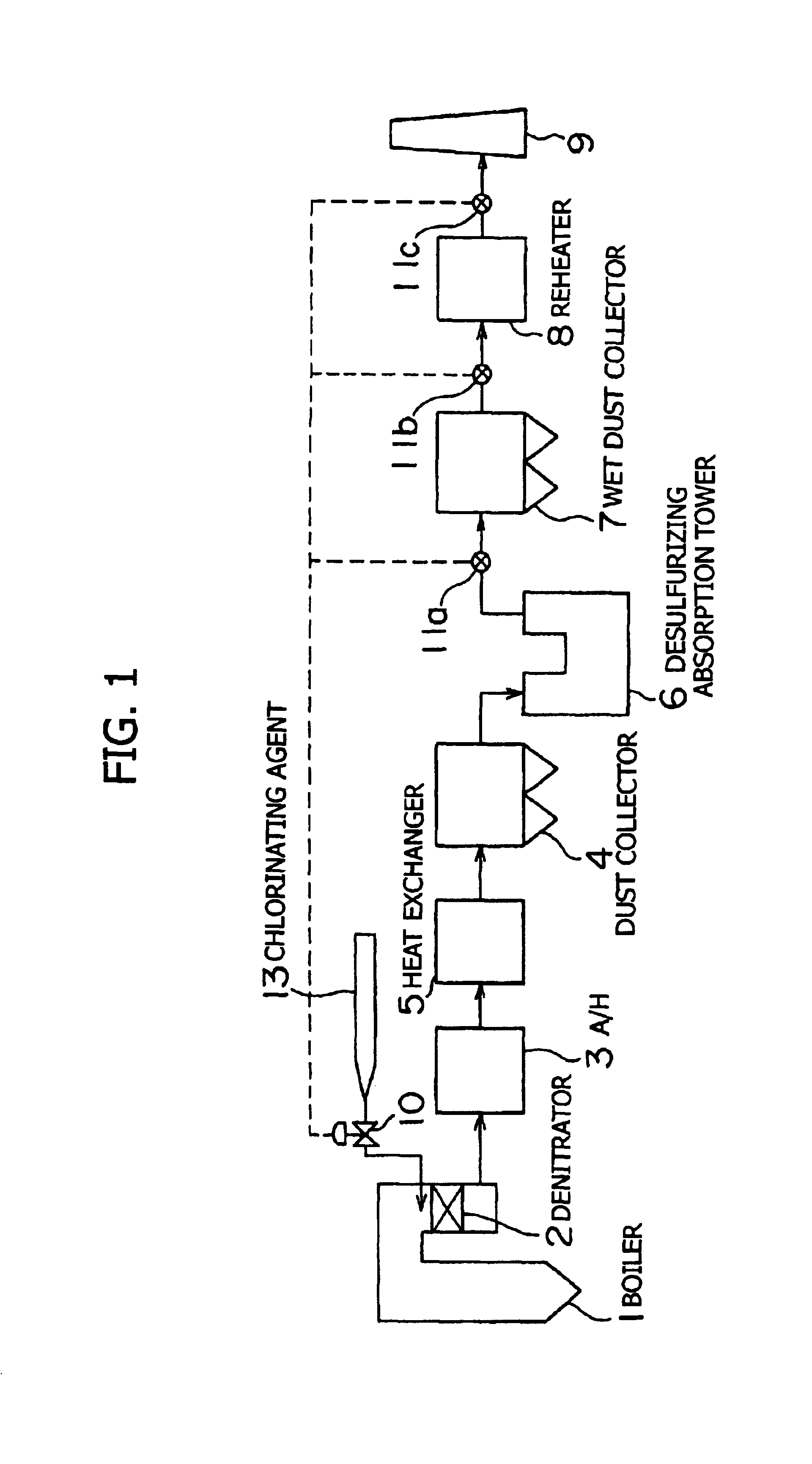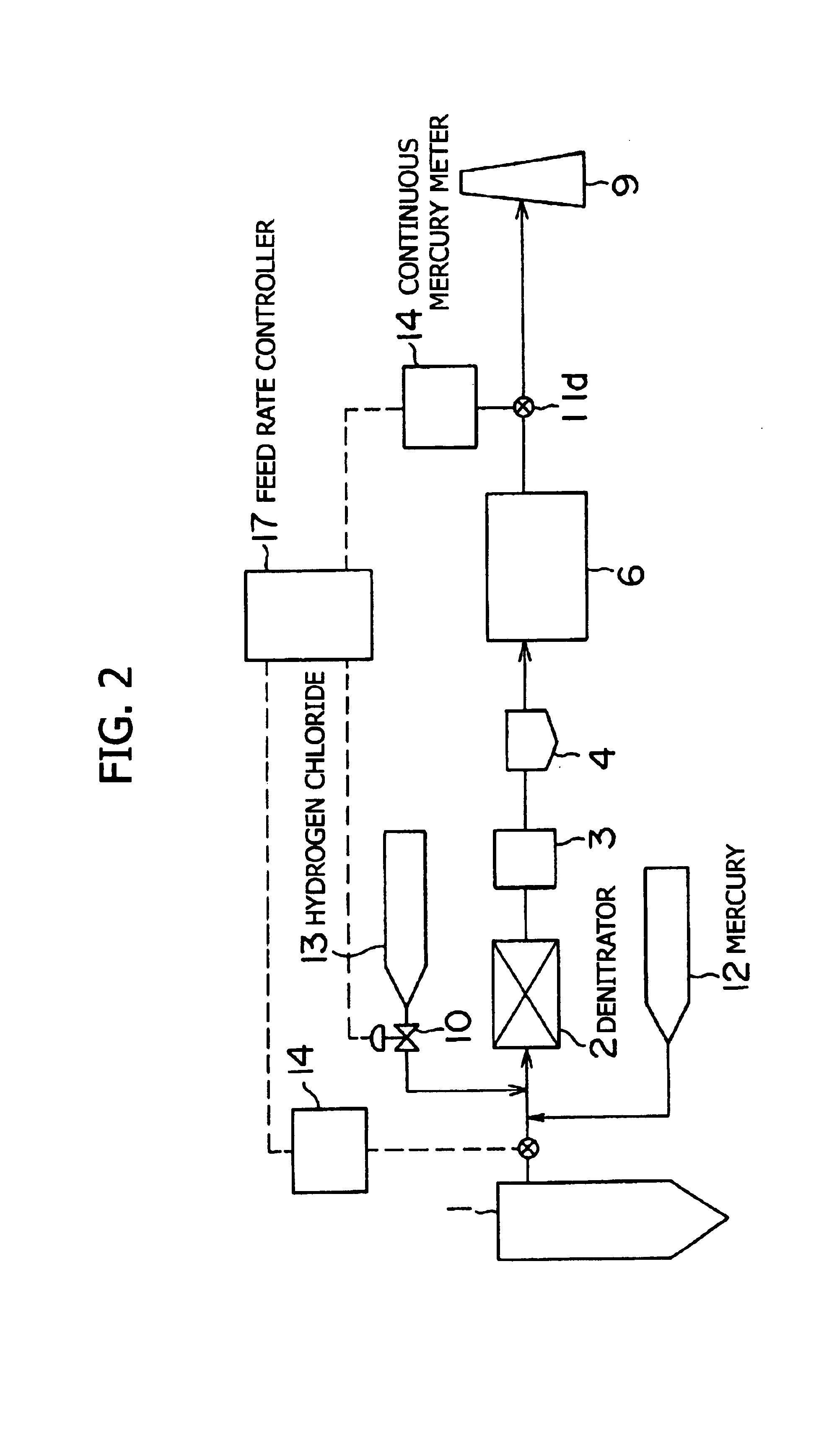Method for the treating in exhaust gas and exhaust gas treating system
- Summary
- Abstract
- Description
- Claims
- Application Information
AI Technical Summary
Benefits of technology
Problems solved by technology
Method used
Image
Examples
first embodiment
[0034]In the present invention, after a chlorinating agent is added to exhaust gas containing NOx, SOx and mercury, the exhaust gas is subjected to a reductive denitration treatment in the presence of a solid catalyst, and then to wet desulfurization using an alkaline absorbing fluid. When this treatment method is carried out in a desulfurizing absorption tower, which is a unit within the system, the exhaust gas is brought into contact with an absorbing fluid such as a circulating lime slurry and thereby freed of SOx by absorption into the absorbing fluid. For mercury contained in the exhaust gas, mercury chloride (HgCl2) is also removed by dissolution into the aforesaid absorbing fluid. However, metallic mercury (Hg) is not removed by the absorbing fluid because mercury in metallic form has a very low solubility in water. Consequently, metallic mercury is contained in the desulfurized exhaust gas as metallic mercury vapor and passes through the desulfurizing absorption tower.
[0035]...
second embodiment
[0070]FIG. 5 illustrates an example of the system employing the treatment method in accordance with this embodiment. For an exhaust gas treatment system, this system is such that, after a chlorinating agent feeding device is used to add a chlorinating agent to exhaust gas containing nitrogen oxides, sulfur oxide and mercury, the exhaust gas is subjected to a reductive denitration treatment in the presence of a solid catalyst of a reductive denitrator, and then to desulfurization using an alkaline absorbing fluid within a wet desulfurizer. Thus, this exhaust gas treatment system is the same as that described above in connection with the first embodiment, but the method for controlling the feed rate of the chlorinating agent is different.
[0071]In this embodiment, the mercury concentration before desulfurization B is detected at a position (on the upstream side of the desulfurizer) selected from the denitrator inlet, the A / H inlet, the heat exchanger inlet, the dust collector inlet, an...
third embodiment
[0074]FIG. 6 illustrates an example of the system employing the treatment method in accordance with this embodiment. As an exhaust gas treatment system, this system is such that, after a chlorinating agent feeding device is used to add a chlorinating agent to exhaust gas, the exhaust gas is subjected to a reductive denitration treatment in the presence of a solid catalyst of a reductive denitrator, and then to desulfurization using an alkaline absorbing fluid within a wet desulfurizer. Thus, this exhaust gas treatment system is the same as that described above in connection with the first embodiment.
[0075]In this embodiment, similarly to the above-described second embodiment, the mercury concentration before desulfurization B is detected at a position (on the upstream side of the desulfurizer) selected from the denitrator inlet, the A / H inlet, the heat exchanger inlet, the dust collector inlet, and the like. On the other hand, the outlet mercury concentration A is detected at a posi...
PUM
 Login to View More
Login to View More Abstract
Description
Claims
Application Information
 Login to View More
Login to View More - Generate Ideas
- Intellectual Property
- Life Sciences
- Materials
- Tech Scout
- Unparalleled Data Quality
- Higher Quality Content
- 60% Fewer Hallucinations
Browse by: Latest US Patents, China's latest patents, Technical Efficacy Thesaurus, Application Domain, Technology Topic, Popular Technical Reports.
© 2025 PatSnap. All rights reserved.Legal|Privacy policy|Modern Slavery Act Transparency Statement|Sitemap|About US| Contact US: help@patsnap.com



